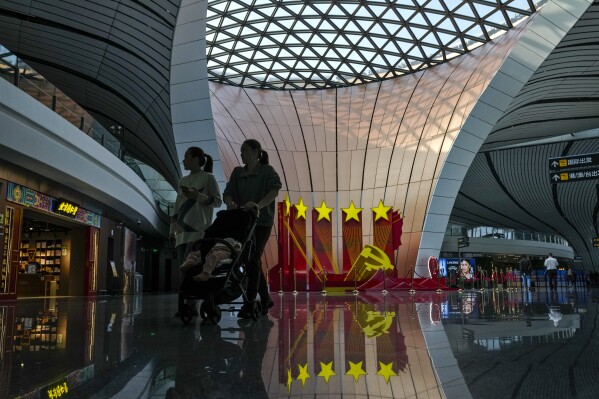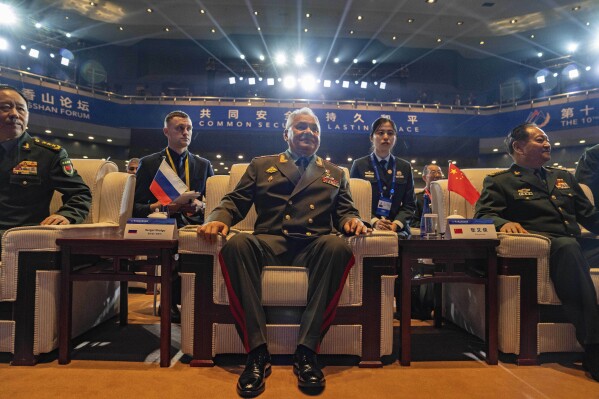China’s declining aid to Pacific islands increasingly goes to allies, think tank reports
CANBERRA, Australia (AP) — China’s declining aid to the South Pacific is increasingly targeted toward its political allies in the region as appetite there for Chinese credit declines and competition grows with the U.S. for influence, an independent Australian think tank reported Tuesday.
Chinese overall economic influence among the 14 aid-dependent island nations in the region is losing ground because of better loan deals being offered by U.S. allies, especially Australia, the Sydney-based Lowy Institute said in its annual analysis of aid to the region.
Focus on the strategic competition in the South Pacific has heightened since China struck a security pact with the Solomon Islands last year that raised the prospect of a Chinese naval foothold in the region.
China has increased aid to the Solomons and neighboring Kiribati since they switched diplomatic allegiances to Beijing from self-ruled Taiwan in 2019, the report said.
 China fetes American veterans of World War II known as ‘Flying Tigers’ in a bid to improve ties
China fetes American veterans of World War II known as ‘Flying Tigers’ in a bid to improve ties
 China holds major financial conference as leaders maneuver to get slowing economy back on track
China holds major financial conference as leaders maneuver to get slowing economy back on track
 Russia’s envoy uses the stage at a military forum in China to accuse the US of fueling tensions
Russia’s envoy uses the stage at a military forum in China to accuse the US of fueling tensions
The United States has sought to counter Chinese influence in the region with additional diplomatic and economic engagement. President Joe Biden recently hosted Pacific Island leaders at the White House.
China’s overall aid to the island states in 2021 – the latest year for which the international policy think tank has comprehensive data -- was $241 million. The year continued a downward trend in Chinese grants and loans to some of the world’s most aid-dependent countries since China’s $384 million peak in 2016, the institute reported.
The latest report revises previous Chinese annual contributions based on additional data but maintains the downward trend.
“It reflects a strategic shift to reduce risk, cement political ties and enhance capital returns,” the report said.
China’s $3.9 billion aid to the Pacific since 2008 was primarily directed to countries with official diplomatic ties to Beijing: These include Cook Islands, Fiji, Micronesia, Niue, Papua New Guinea and Samoa.
“Because China only provides ODF (official development finance) to a subset of Pacific countries, it can play an outsized role in these countries that belies its moderate role share of total regional financing,” the report said.
China was only the third-biggest aid contributor to Pacific after Australia, which provides 40%, then the Asian Development Bank, the report said. China’s contribution since 2008 has been 9%.
The decline in Chinese aid has been driven mainly by a lack of Pacific government interest in Chinese loans that have left Pacific countries including Tonga heavily in debt. The United States has warned that Chinese finance is a debt trap for poor countries that threatens their sovereignty.
“What is very clear is that the interest from Pacific governments in Chinese loans, specifically infrastructure loans, has declined,” Lowry researcher Riley Duke said. “The way that China lands, it’s just being outcompeted.”
China held a third share of the infrastructure investment in the Pacific market two decades ago, but that proportion had since halved, the report said.
Disclaimer: The copyright of this article belongs to the original author. Reposting this article is solely for the purpose of information dissemination and does not constitute any investment advice. If there is any infringement, please contact us immediately. We will make corrections or deletions as necessary. Thank you.
